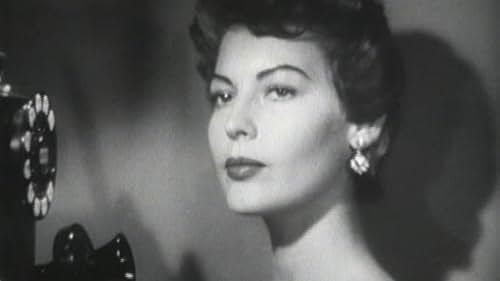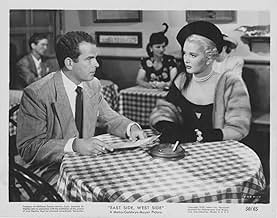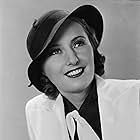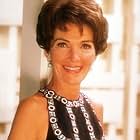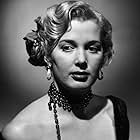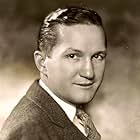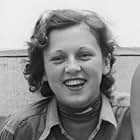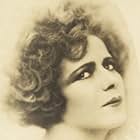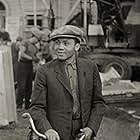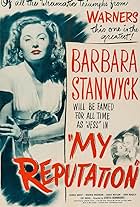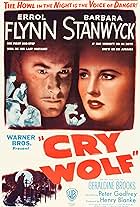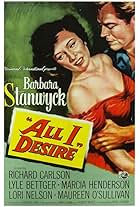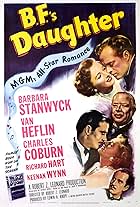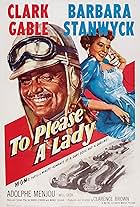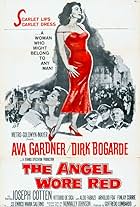IMDb RATING
6.9/10
2.5K
YOUR RATING
A vain businessman puts a strain on happy marriage to a rich, beautiful socialite by allowing himself to be seduced by a former girlfriend.A vain businessman puts a strain on happy marriage to a rich, beautiful socialite by allowing himself to be seduced by a former girlfriend.A vain businessman puts a strain on happy marriage to a rich, beautiful socialite by allowing himself to be seduced by a former girlfriend.
Nancy Reagan
- Helen Lee
- (as Nancy Davis)
Dorothy Abbott
- Model
- (uncredited)
Mimi Aguglia
- Grandma Senta
- (uncredited)
Joel Allen
- Interne
- (uncredited)
Ernest Anderson
- Redcap at Airport
- (uncredited)
- Director
- Writers
- All cast & crew
- Production, box office & more at IMDbPro
Storyline
Did you know
- TriviaGale Sondergaard, who plays Barbara Stanwyck's character's mother, is only eight years older than Stanwyck in real life (at the time of filming, 50 vs. 42).
- GoofsWhen Josephine enters Jessie's room while Jessie is crying after reading the paper about the previous night's events, the interior door has a deadbolt lock on it but no corresponding plate or bolt is on the door's edge. This is a common shortcut of set carpenters; the same is seen with Isabel's apartment door.
- Quotes
Nora Kernan: Jessie looks wonderful tonight.
Brandon Bourne: She has you to thank for her looks, darling.
Nora Kernan: And you! When a woman gets more beautiful after she's married, it means her man is either making her very happy or very unhappy.
Brandon Bourne: Oscar Wilde?
Nora Kernan: No, Belasco.
- ConnectionsReferenced in Moving Pictures (2016)
Featured review
Stanwyck and Heflin have a palpable chemistry here, and Ava Gardner is a most alluring vixen. Cyd Charisse is a delectable ingenue (and a tall drink of water), while Gale Sondergaard is hilarious as a hard-bitten, hoydenish Amazon floozie. Stanwyck is playing about 10 years younger than her actual age (her film mother admits to being 55, when Stanwyck is in her early forties here, and while still handsome, she does look her age).
Mervyn Leroy did a nice job of combining the noir/woman's-picture genres, though its ennoblement of Stanwyck robs her of her strengths as a no-nonsense woman, good or bad. Her scene with Gardner is a standout -- both actresses are well matched; Gardner's feline beauty and laissez-faire romantic approach nicely complements Stanwyck's humane fatalism -- and Stanwyck and Van Heflin are an appealing couple. Mason is rather a chump, however -- he seems to be underplaying to the point of lethargy, though his handsome charm surfaces here and there; yet he and Stanwyck, though matched in terms of age (she was younger by a couple of years) are not the type for each other; he doesn't suit her, screen-wise. Heflin's naturalism -- a performance of great charm and likability -- is more suited to Stanwyck's style and one longs for them to get together. Great use of sets to evoke New York, teeming with nightlife, and Leroy always had a knack for directing extras so that the city scenes seem peopled with real lives rather than populated with stand-ins. Costumes, though late 1940s, seem a bit recherche, as if the designer hadn't left the 1930s, with the women's gowns too ornate for such a sophisticated post-war milieu.
Not a great picture by any means, but a highly enjoyable one; a viewer wishes the director and screenwriter -- the talented Isobel Lennart, who later wrote "Two for the Seesaw," among many others -- had trusted more in the chemistry between Heflin and Stanwyck, and discarded some of the Marcia Davenport source material, juicy as it must have been. This is from Stanwyck's late-1940s string of women's flicks, which did not play to her strengths. But middling Stanwyck is usually better than anyone else's best. And the underrated Van Heflin is worth rooting for, too.
Mervyn Leroy did a nice job of combining the noir/woman's-picture genres, though its ennoblement of Stanwyck robs her of her strengths as a no-nonsense woman, good or bad. Her scene with Gardner is a standout -- both actresses are well matched; Gardner's feline beauty and laissez-faire romantic approach nicely complements Stanwyck's humane fatalism -- and Stanwyck and Van Heflin are an appealing couple. Mason is rather a chump, however -- he seems to be underplaying to the point of lethargy, though his handsome charm surfaces here and there; yet he and Stanwyck, though matched in terms of age (she was younger by a couple of years) are not the type for each other; he doesn't suit her, screen-wise. Heflin's naturalism -- a performance of great charm and likability -- is more suited to Stanwyck's style and one longs for them to get together. Great use of sets to evoke New York, teeming with nightlife, and Leroy always had a knack for directing extras so that the city scenes seem peopled with real lives rather than populated with stand-ins. Costumes, though late 1940s, seem a bit recherche, as if the designer hadn't left the 1930s, with the women's gowns too ornate for such a sophisticated post-war milieu.
Not a great picture by any means, but a highly enjoyable one; a viewer wishes the director and screenwriter -- the talented Isobel Lennart, who later wrote "Two for the Seesaw," among many others -- had trusted more in the chemistry between Heflin and Stanwyck, and discarded some of the Marcia Davenport source material, juicy as it must have been. This is from Stanwyck's late-1940s string of women's flicks, which did not play to her strengths. But middling Stanwyck is usually better than anyone else's best. And the underrated Van Heflin is worth rooting for, too.
Details
- Release date
- Country of origin
- Languages
- Also known as
- Istocna strana, zapadna strana
- Filming locations
- Production company
- See more company credits at IMDbPro
Box office
- Budget
- $1,754,000 (estimated)
- Runtime1 hour 48 minutes
- Color
- Aspect ratio
- 1.37 : 1
Contribute to this page
Suggest an edit or add missing content


